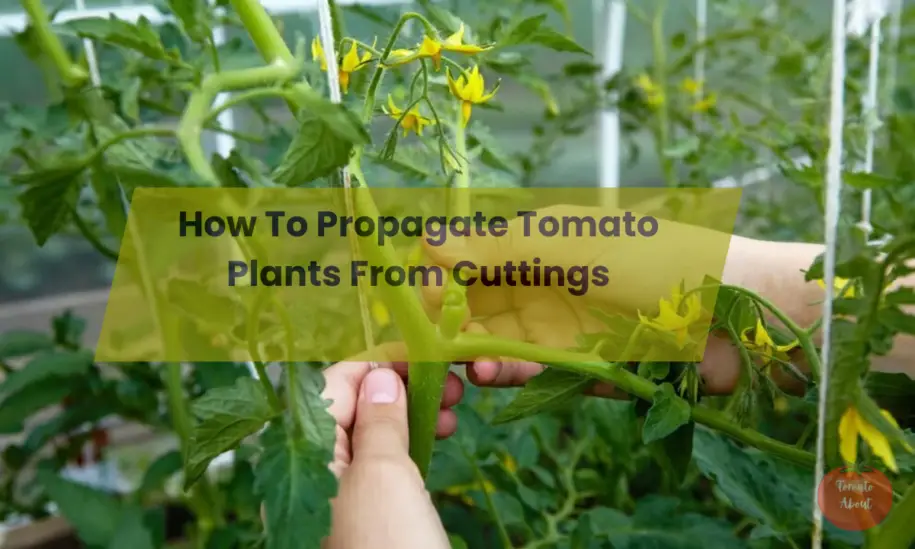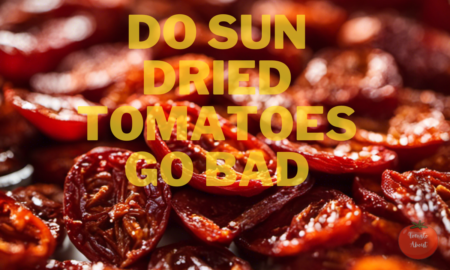Summer brings bountiful harvests of juicy, vine-ripened tomatoes. But why wait for the season when you can enjoy fresh tomatoes all year round? Propagating tomato plants from cuttings lets you replicate your favorite productive plants, indoors or out. In just weeks, you’ll have an endless supply of tomatoes on compact, easy-to-manage plants.
Propagating tomatoes is a simple process and ideal for the beginner gardener. With just a little time and care, you can clone the tastiest tomatoes from your garden or a friend’s. Follow these easy steps for propagating tomato plants from cuttings. You’ll be rewarded with bushels of delicious tomatoes in no time!
What Are Tomato Cuttings?
First, let’s cover the basics. Tomato cuttings are stems snipped from existing tomato plants.
Specifically, they are stems removed during pruning. This includes pinching off suckers and trimming away old growth.
Suckers are small shoots that emerge where branches meet the main vine. Left alone, suckers divert energy away from fruit production.
Pruning away old growth helps control diseases. Removing spent leaves and stems improves airflow and light exposure.
Rather than tossing these pruned pieces out, you can grow them into whole new plants!
How To Remove Cuttings From Tomato Plants
The key to successful tomato propagation is using healthy, actively growing shoots. Look for suckers on established plants in early summer. These suckers sprout where the stem and branches intersect.
For the quickest root growth, select suckers no longer than 6 inches. Take cuttings with at least two fully expanded leaves to provide energy for root growth. Then make a clean cut at a 45-degree angle using sterilized pruners. This creates more surface area for roots to emerge.
Tip: Indeterminate varieties root a bit more readily than determinates. But either will generate roots rapidly under the right conditions.
Rooting Tomato Cuttings in Water
The easiest way to root tomatoes is by placing cuttings in water. This lets you monitor root development with minimal effort.
Start by filling a glass or jar with room-temperature water. Remove any leaves that would sit submerged. Then place your cutting into the water so the bottom 2 inches are covered.
Put the glass in a bright spot out of direct sun. Top off the water as needed to maintain the level. Refresh the water every few days.
In 7 to 14 days, you should notice white roots emerging from the cut end. Let roots grow 1-2 inches long before transplanting your new plant into the soil.
Rooting in Soil for Stronger Transplants
While water rooting is fun to observe, you may get better results rooting directly in soil. This helps tender new roots transition smoothly to the garden.
Use small pots filled with a lightweight, sterile potting mix. Bury cuttings 2-3 inches deep, leaving just the leaves exposed.
Keep soil moist but not soaked for quick rooting. Light misting maintains humidity around emerging roots.
Check for root establishment after a week by gently tugging. If resistance is felt, roots have developed. Transplant after 2-3 weeks into larger containers or the garden.
Tip: Take extra cuttings to replace any that don’t thrive. The rapid growth habit makes repropagation a simple process.
Caring for Newly Rooted Tomato Plants
Once cuttings have rooted, it’s time to get them growing! Handling new plants with care ensures they are established quickly.
When transplanting, disturb roots as little as possible. Water thoroughly after planting to eliminate air pockets.
Hardening off gradually acclimates tender plants to outdoor conditions. Start by placing pots in partial shade for a few hours. Slowly increase sun and wind exposure over 7-10 days.
Even when hardened off, newly rooted tomatoes need protection from harsh sun and wind. Use cloches, cold frames, or row covers to shield plants while establishing.
Apply a balanced organic fertilizer when transplanting. Side-dress monthly to keep plants vigorous and productive. Adequate water and nutrition are vital.
How to Get the Best Harvest from Propagated Tomatoes?
Follow best practices for growing hearty, productive plants.
- Full sun exposure – Tomatoes need a minimum of 6-8 hours of direct sun daily. The morning sun is ideal for reducing disease.
- Fertile soil – Amend beds with compost to provide nutrients. A soil pH between 6.0-6.5 is optimal.
- Ample spacing – Allow 18-36 inches between plants depending on the variety. Overcrowding stresses plants and reduces yields.
- Support for healthy foliage – Use cages, stakes, or trellises to keep plants upright and prevent disease.
- Consistent watering – Tomatoes need 1-2 inches of water per week. Inconsistent moisture can cause problems.
- Pruning for productivity – Remove suckers regularly to focus energy on fruit production.
Troubleshooting Tips for Healthy Cuttings
Rooting tomato cuttings is usually a straightforward process, but occasionally issues pop up. Here are some troubleshooting tips for healthy, robust cuttings:
- Sterilize tools and containers to prevent disease spread. Soak in a 10% bleach solution for 10 minutes prior to use.
- Maintain consistent warmth around 75°F. Fluctuating temperatures can inhibit root growth. Consider using a heat mat or grow lights if needed.
- Keep humidity levels around cuttings elevated by misting daily and tenting with plastic wrap.
- Avoid overwatering during rooting. Soil should be moist but not soggy. Excess moisture invites fungal problems.
- Give cuttings bright, indirect light. The direct hot sun will scorch tender new growth before roots are established.
- Check water acidity. A pH between 6-7 is optimal. Acidic water below 5.5 pH can prevent nutrient absorption.
- If leaves are yellow or wilt, clip them off immediately. This prevents disease spread while cutting still roots.
Follow proper sanitation methods, and environmental conditions, and care for the highest success propagating tomato cuttings. With a little diligence, you’ll reap wonderful rewards!
Overwintering Cuttings Indoors
As seasons change, you don’t have to lose your tomato plants! Tomato cuttings can be overwintered indoors with grow lights or sunny windows.
Start by taking cuttings in late summer from the healthiest, most productive plants. Root them as usual, then transition to pots.
Place in the sunniest window possible once brought inside. Rotate pots regularly to prevent one-sided growth toward light.
Set up full spectrum grow lights if insufficient natural light. Position 6-12 inches above plants, with 14-16 hours of daily exposure.
Provide nighttime temperatures around 65°F and days up to 75°F. Watch for pests like whiteflies that thrive indoors.
Pinch back leggy growth to encourage bushiness. Fertilize monthly with balanced organic plant food.
Come spring, harden off plants by gradually introducing them to the outdoors over 7-10 days. Transplant to garden after the last frost when night temps stay above 50°F.
With diligent care, overwintered tomato cuttings will reward you with the earliest homegrown tomatoes!
Propagating Tomatoes From Seeds
Growing tomato plants from cuttings produces identical clones rapidly. But starting from seed allows the discovery of new varieties. Here’s how:
Begin indoors 6-8 weeks before your last expected frost. Sow seeds 1⁄4 inch deep in sterile seed starting mix. Cover trays with plastic domes to retain moisture.
Germination takes 5-12 days at temperatures around 75°F. Provide 14-16 hours under grow lights daily, keeping lights 2-4 inches above seedlings.
Once sprouted, remove domes and thin seedlings to the strongest one per cell. Keep ambient temperatures between 65-75°F during the day.
Harden off before transplanting. Set plants outdoors in partial shade, increasing exposure over 7-10 days. Transplant seedlings 18-24 inches apart after frost danger passes.
With proper care, seeded tomatoes will grow into productive plants. But starting cuttings is faster and guarantees identical results year after year.
Frequently Asked Questions
Can you propagate tomatoes from just a stem?
Yes, as long as the stem cutting has leaves attached, it can potentially root and form a new plant. Leafy sections of the stem are ideal for cuttings.
Do tomato cuttings need rooting hormone?
While not required, rooting hormone can speed up the process and increase success rates. Use a powder or gel product designed for vegetables and follow directions.
Can you grow tomatoes from a tomato slice?
Yes, It’s possible but more challenging than using intact stems. Remove the skin and plant just the fleshy part of the slice in sterile soil. Keep warm and moist until new growth emerges.
Wrapping up!
Propagating tomato plants from cuttings lets you easily replicate your favorite productive varieties. In just weeks, tender new roots will establish, allowing you to grow clones rapidly. With simple supplies and proper care, anyone can create abundant homegrown tomatoes from cuttings.
The superior flavor and vine-ripened goodness of homegrown tomatoes is only cuttings away. Follow the techniques here for propagating success. Soon you’ll enjoy summer’s bounty of juicy tomatoes even in winter!



